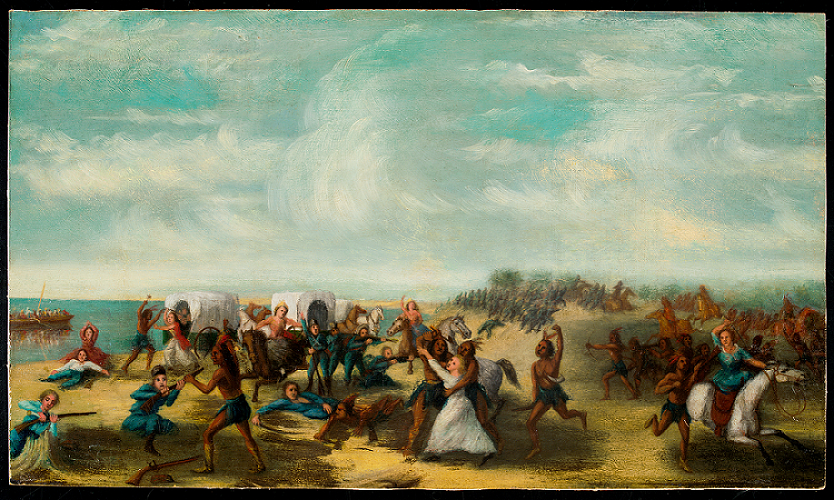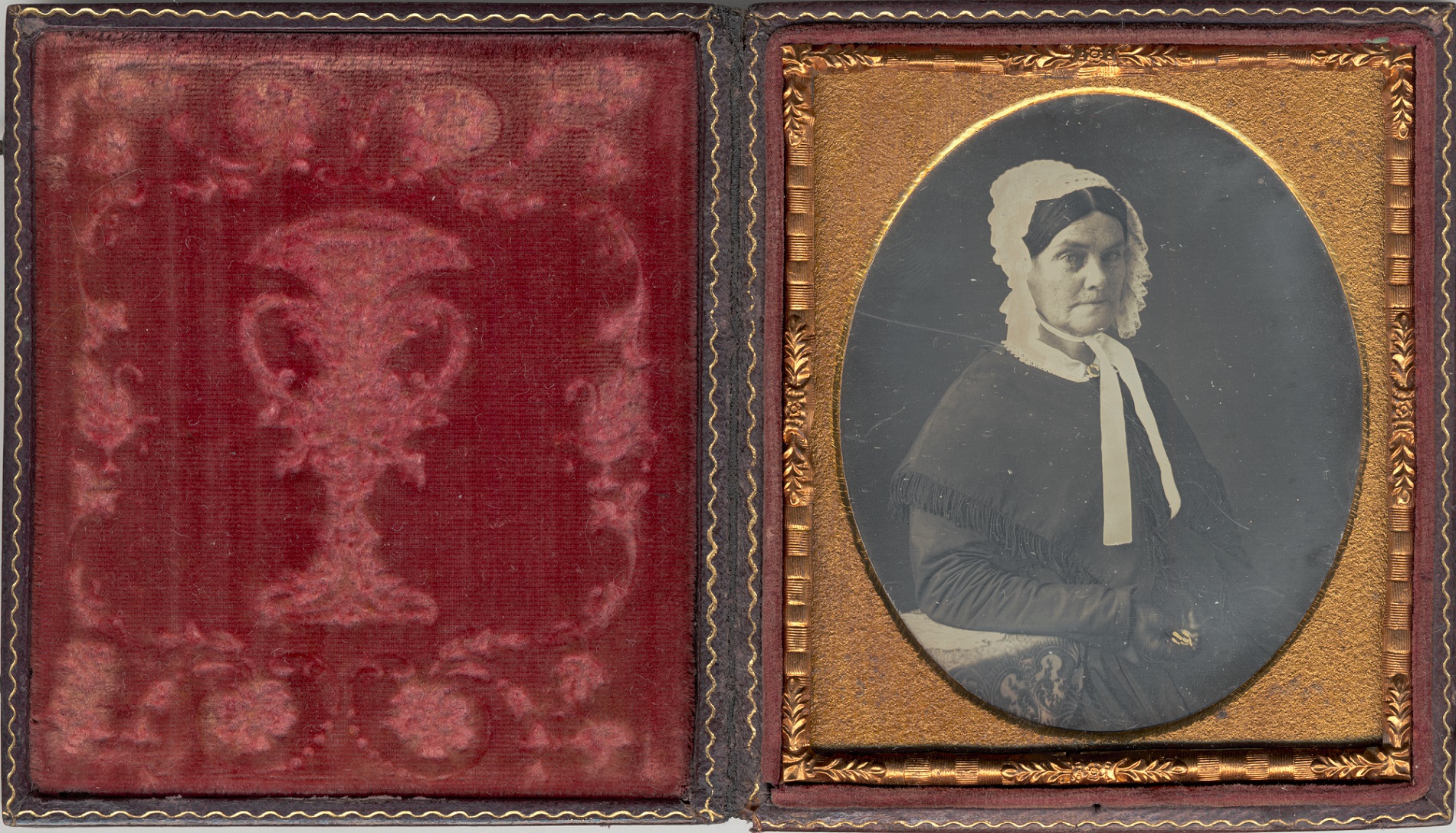Background
In 1795, the U.S. government made peace with the Indigenous communities of the Northwest Territory at the end of the Ohio War. But white Americans continued to settle on Indigenous lands. When the United States went to war with England during the War of 1812, many Indigenous people chose to fight with the English. They hoped the war was an opportunity to reclaim their lands.
Fort Dearborn was a U.S. fort located where modern-day Chicago is. In 1812, Captain Nathan Heald was the commanding officer of the fort. Heald did not trust Indigenous people. As a result, relations between the fort and the local Miamis and Potawatomis were very strained. When British troops captured nearby Fort Mackinac, Heald was ordered to evacuate Fort Dearborn. He was instructed to give the fort’s extra food and ammunition to the Potawatomis to earn their support and trust. Heald suspected the Potawatomis would use the supplies against the United States, so he burned everything instead. The Potawatomis were furious. They announced that they would attack as an act of revenge.
On August 15, Heald set out from Fort Dearborn with 54 U.S. soldiers, 12 militia, 9 women, and 18 children. The group was accompanied by Miami warriors who had been hired to protect them on the journey to Fort Wayne. The evacuees only made it about two miles before Potawatomi warriors attacked. The Potawatomi had a much larger fighting force, and the Miami did not fight back. The warriors overpowered the U.S. soldiers in only 15 minutes. Many died, including 26 soldiers, all 12 militia, 2 women, and 12 children. The Potawatomi took the survivors prisoner and burned Fort Dearborn to the ground.
The Potawatomi won the Battle of Fort Dearborn, but the aftermath was devastating for the Ohio Valley and Great Lakes nations. The U.S. government called the attack a massacre, and white Americans from across the country called for revenge. U.S. General William Henry Harrison attacked Miami towns to punish the warriors who failed to defend the evacuees. And when the War of 1812 was over, the Battle of Fort Dearborn was used to justify the forced removal of all the tribes in the Northwest Territory.
About the Image
The photograph depicts Rebecca Wells Heald, wife of Fort Dearborn commander Captain Nathan Heald. Her uncle, Captain William Wells, had been adopted by the Miamis as a boy. Rebecca was one of the first white women to settle in the area that would become the city of Chicago. She was part of the group of evacuees that was attacked by the Potawatomi in the Battle of Fort Dearborn. Her uncle was the commander of the Miami warriors who were supposed to protect the evacuees. Rebecca and her husband were taken prisoner during the battle. Her uncle was killed while trying to defend the wagons carrying the women and children. Rebecca and Nathan were eventually ransomed back to the United States.
The painting of the Battle of Fort Dearborn was made by Samuel Page in 1812. Samuel was not at the battle, so his painting is not an accurate depiction. Instead, it shows us how the artist felt about the event. It also illustrates how the Battle of Fort Dearborn was used to make white Americans fear and hate the Indigenous people in the Northwest Territory.
Vocabulary
- Miami: Also known as the Myaamia. This Indigenous community originally inhabited lands that are part of modern-day Indiana, Michigan, and Ohio. Today, there are large Miami communities in Oklahoma and Indiana.
- militia: Volunteer army.
- Ohio War: War between the U.S. government and the united Indigenous communities that inhabited the lands the U.S. claimed as the Northwest Territory.
- Northwest Territory: The first incorporated territory of the United States. It was formed from lands that now make up the states Ohio, Indiana, Illinois, Michigan, Wisconsin, and Minnesota.
- Potawatomi: The Potawatomi tribe originally inhabited lands that are part of modern-day Michigan. Today, there are large communities of Potawatomi living in Michigan, Wisconsin, Oklahoma, and Kansas.
- War of 1812: A war between the United States and Britain fought between 1812–1815.
Discussion Questions
- What does the Battle of Fort Dearborn reveal about the state of U.S. relations with Indigenous communities in the Federal period?
- Why is it important to study the U.S. wars with Indigenous communities?
- Who made this painting? What message were they trying to convey? Why is it important to consider these questions when using works of art to learn about the past?
Suggested Activities
- Use these sources together with Washington’s Captives in any lesson about the incorporation of the Northwest Territory.
- For a larger lesson about Indigenous communities’ relations with the U.S. in the Federal period, combine this resource with any of the following: Making Treaties, Washington’s Captives, Seminole Wars, Life Story: Sacagawea, Life Story: Lydia Carter, and Life Story: Harriet R. Gold Boudinot.
- Rebecca Heald was one of the first settlers of Chicago. Ask students to consider how her legacy changes based on the lens it is viewed through. How do you think 19th-century white Americans viewed her? What about 19th-century Potawatomi? How should we frame her role in the settlement of Chicago today?
- To learn more about what Rebecca Heald’s life may have been like, see White Settler Women.
Themes
POWER AND POLITICS








